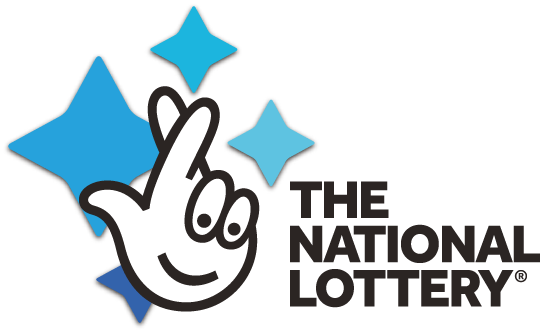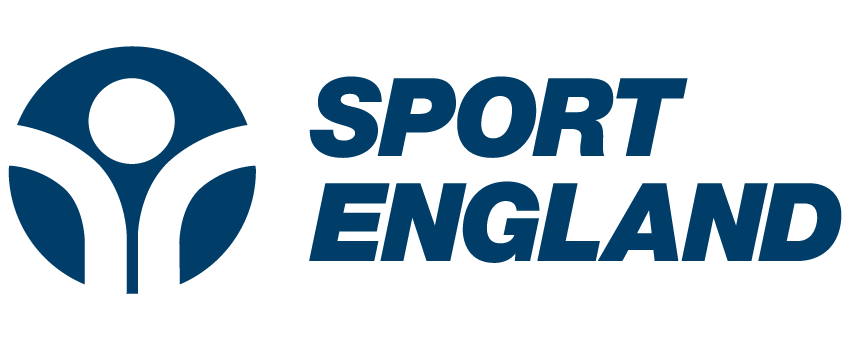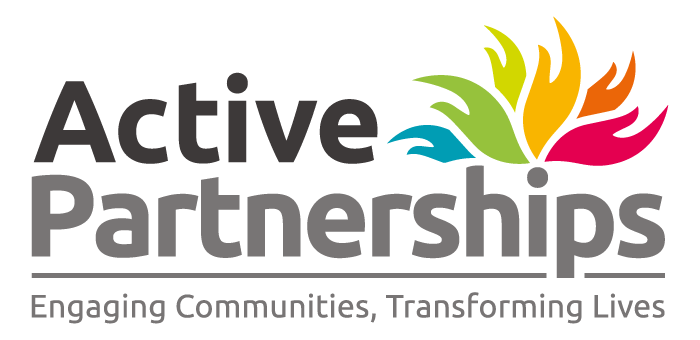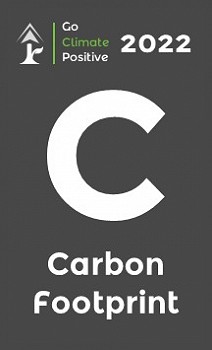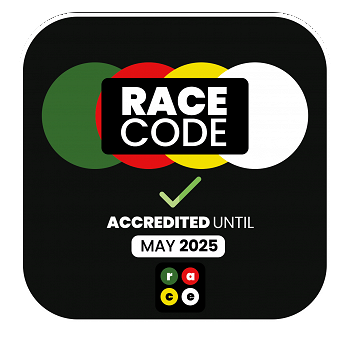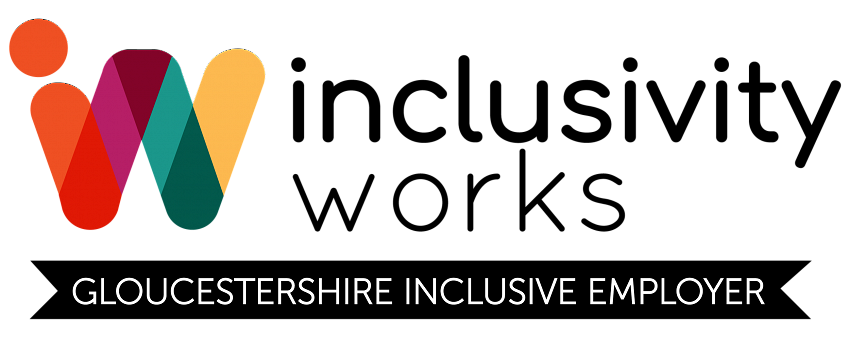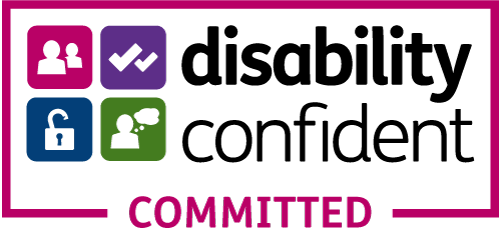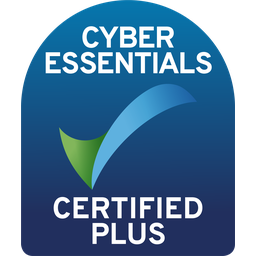Our Journey to inclusive recruitment
City Works, Alfred Street, Gloucester, United Kingdom, GL1 4DF
Over the past couple of years, we’ve taken time to evaluate our commitment to equality, diversity and inclusion, by better understanding our motivations and identifying our priorities. The tragic killing of George Floyd in 2020 kick-started this process and led to several very honest and at times challenging conversations within our team.
We recognised that in order to better understand the needs and priorities of the communities we work with, we needed to embed sound diversity practices within our internal governing structures as well as when working with external partners and stakeholders.
Our four year diversity action plan established a set of short, medium and long term priorities and actions which we have been working towards since 2018. And one of the most important of these over the past 18 months has been reviewing and modifying our recruitment practices with the aim of making them more transparent, fair and effective.
What is inclusive recruitment?
Inclusive recruitment is the process of attracting, recruiting and retaining people from a variety of backgrounds with the aim of creating a diverse workforce. It is essentially designed to eliminate our own biases.
Why recruit inclusively?
- By attracting diverse talent, we equip ourselves with unique perspectives, fresh ideas and innovative solutions. We avoid the pitfalls of confirmation bias and the dangers that come with an ‘echo chamber’ culture and better position ourselves to make bolder and more creative business decisions. We may also become more adept at spotting and mitigating risk.
- By creating and embedding an inclusive recruitment process employees are more likely to feel accepted and respected and generally have a stronger commitment to our organisation. Ultimately, if we focus on ensuring our employees are happy, we can build a stronger team and create a genuinely healthy and pleasant working environment.
- Recruiting and retaining staff with different perspectives can improve conflict resolution and problem solving within the team.
- Having cognitive diversity and diversity of lived experience within our team can help us to better understand the needs of the groups we work with and forge stronger and more productive partnerships with them.
Our approach
- Test and learn
We knew that developing and embedding inclusive recruitment practices would be a substantial and complex task and that we may not get it right first time round, but we didn’t want to stifle our ideas or limit the scope of our commitment. As such, we adopted a ‘test and learn’ approach, one that would enable us to make bolder propositions, trial them and then step back and reflect on what had gone well and what may need revision. It proved successful, as it boosted our feelings of competency and control, kept us motivated throughout the duration of the process and deepened our understanding of inclusive recruitment.
- Engage the team
We always knew that any successful attempt at modifying recruitment practices would hinge on working with our staff and retaining their support. So, in addition to forming a working group of interested and motivated staff, we issued various updates and held lunch and learns with the wider team, so that they had the opportunity to understand the changes being introduced, ask any questions and raise any concerns.
There were two main benefits to engaging the team:
- Pooling their knowledge, skills and insight would better inform the process and help us to iron out any problems more efficiently.
- Consulting our staff and seeking their consensus would increase their sense of value and purpose, boost morale and improve team cohesion around the process and possibly adherence to it.
- Seek advice from external experts
Our working group had plenty of ideas around how we would approach the review of our recruitment processes. We had also done some initial research on what might work for our organisation. However, we knew that in order to ensure the viability and longevity of our new recruitment process we would need to consult experts in the field. Their objectivity and perspective would help to strengthen and inform our work.
We collaborated with a local organisation called Gloucestershire Gateway Trust, whose help was invaluable. They helped us to broaden our understanding of inclusive recruitment, get clear on our motivation for embarking on the journey and map out in greater detail the areas of the recruitment process we wanted to change. They also helped us to trouble shoot challenges we faced around securing wider team buy-in.
- Create a process that works.
There’s no doubt that every organisation has their own challenges with processes. They can be hard to find, difficult to digest and fall out of date quickly. However, recruitment is by its very nature sequential and therefore lends itself quite nicely to a process framework. We hoped that documenting and sharing our process with the wider team would:
- provide them with greater clarity on how it worked
- encourage their participation in it
- ensure no part of the process was overlooked
- provide us with valuable learning opportunities
The outcomes
In April 2021, a small working group of recruiting line managers and operational staff formed to take on the task of reviewing and revising our existing recruitment practices With our approach decided upon, we set about breaking down our recruitment process into three stages – application, interview and induction, to make the task of analysis and review easier. Here are the outcomes:
Application stage
- Our job descriptions were redesigned to make them more visually appealing and simpler to understand. We also highlighted our internal culture and expanded on the purpose of the job role to ensure the job description was rich in knowledge and useful to the applicant.
- We built in statements on confidentiality and equality and diversity to demonstrate our commitment to fairness and transparency and help to build trust.
- The merits and pitfalls of several alternative methods of application were weighed up – including CVs, covering letters and online applications to ensure our process was as inclusive and accessible as possible.
- We ensured all applicants had the opportunity to chat through the role with the recruiting line manager before applying.
- Our application form was simplified ensuring there was greater focus on lived experience, training and work history, rather than just educational qualifications.
- We introduced anonymised recruitment as standard practice to eliminate unconscious bias and discrimination.
- We widened our audience and advertising channels, targeting networks via direct emails and using newsletters, social media, LinkedIn and other local job websites to share the role more widely.
- We produced promotional videos to help make the role more engaging and accessible.
Interview stage
- We now have in place diverse shortlisting and interview panels for each role, ensuring varied perspectives and opinions.
- Ahead of the interview we check and meet the needs of any candidates with additional requirements (online/face to face)
- As well as focusing on skills and education, interview questions now assess motivation and include more hypothetical and competency based questions, to ensure the interview is inclusive and accessible to all candidates.
Induction
- Prior to this process, our induction process had primarily focused on ensuring our new employees understood our policies, procedures and systems. We were determined that future inductions should showcase our culture and explain who we are and what we believe in, rather than simply how our office runs.
- Each new starter is now assigned a ‘buddy’ who will take them out for an informal ‘meet and greet,’ away from the office.
- New employees are sent our culture handbook so they can get to know who we are, how we work and the ways in which we look after our staff and their wellbeing.
- Our formal induction to processes and systems is now phased over a couple of days and paced according to the individual. It includes signposts to videos and documents that an employee can read in their own time.
- We try to arrange a staff social around the time a new employee joins, so they can get to know staff away from the office, in a more sociable and fun setting.
- Any introductory meetings to internal staff or external partners are phased and adapted where required, to reduce any potential overwhelm.
Inclusive Employer Award
As a result of our commitment to inclusive recruitment and the efforts we made to review and revise our recruitment practices, we were awarded ‘Inclusive Employer’ status by Gloucestershire Gateway Trust in February 2022. The award recognises businesses in Gloucestershire that lead by example and provide opportunities for people facing barriers to work. We are delighted to be one of 20 businesses and organisations to have received the award since October 2021.
Our lessons
- Establish realistic goals
An exciting new project can often lead to scope creep, which can ultimately set you up to fail before you’ve even begun. Be realistic about what’s achievable with the resources and time you have available to you and when working with others be mindful of their workload too. Work together to set clear, achievable and measurable goals and remember to celebrate them as you tick each one off.
- Set clear expectations of yourself and those around you
To help prevent inertia and maintain momentum, establish clear expectations of yourself and those within your team. It’s easy, as work piles up for priorities to slip and goals to remain unfulfilled. Remind yourself and others of the importance of your task and what’s at stake if you fail to meet expectations or build support for your work.
- Work with your team to secure buy-in
Introducing a new way of working into an organisation can easily alienate staff, especially if a top-down approach is adopted. Learn to bring people along with you on your journey. Share your progress, invite opinion and feedback and take time to listen and respond to it. Doing so will help you build genuine support and engagement for your work. It’s worth noting that without this, the sustainability of your project could be jeopardised.
- Inclusive recruitment is not an end goal it’s a process
Regardless of the goals you set and the deadlines you establish, introducing and embedding inclusive recruitment is in itself a process rather than an end goal. Whilst you will make progress, achieve objectives and tick off actions, what you’re aiming for is progress not perfection. What inclusive recruitment looks like for your organisation may differ a great deal from what it looks like in another organisation. Adopting a test and learn approach has provided us with regular periods of reflection, following which our process and practices have evolved and improved.
- Don’t expect it to go perfectly
Even with the right approach, an enthusiastic and driven working group and a simply documented process, things may not always go to plan. You will inevitably encounter resistance and possibly even criticism from other team members. That’s entirely natural and to be expected. With a diverse workforce, comes divergent opinion and personalities. There will be people in your team who embrace the change and others who are either sceptical or less passionate about your work. Try to resist the temptation to judge that and take it personally. We’re all different and we all have different drivers.
Conclusion
Revising and modifying our recruitment practices has taken time and effort. Yet despite this, we’ve found that the benefits of recruiting inclusively have far outweighed its challenges.
Not only has our journey resulted in a fairer, more transparent and accessible recruitment process, but our approach has had a lasting impact on the team and shaped the way in which we approach other projects and initiatives. Our inclusive recruitment work has also acted as a catalyst for other exciting equality and diversity initiatives such as our work placement scheme, which will begin later this year.
And so, whilst we have come far in our journey, we are by no means at the end. Our thinking around inclusive recruitment will keep evolving as we strive to continuously develop and improve our existing practices.
What are your thoughts on our inclusive recruitment journey? Are you considering changing your approach to recruiting staff?
Liked this blog? Sign up to our mailing list for updates.
Hello blog scanner! Here’s a summary of the above….
- Our inclusive recruitment journey emerged from a broader organisational commitment we made to equality, diversity and inclusion in 2020.
- Creating a diverse workforce has many benefits. It can help boost your organisation’s productivity, improve your internal culture and help you to better support those you work with.
- Certain principles guided our approach including testing what worked and learning from it, securing full team engagement, bringing in external experts and putting in place an easy-to-follow process.
- Our outcomes included an open, fairer and more transparent application stage, a more inclusive and accommodating interview process and a phased and more informal induction, which focused less on our policies and procedures and more on our culture, values and staff.
- Throughout our journey we learnt some valuable lessons. We realised the importance of establishing realistic goals, setting clear expectations of ourselves and others, securing team buy in, understanding that inclusive recruitment is a process not an end goal and accepting that the journey won’t all be smooth sailing.
